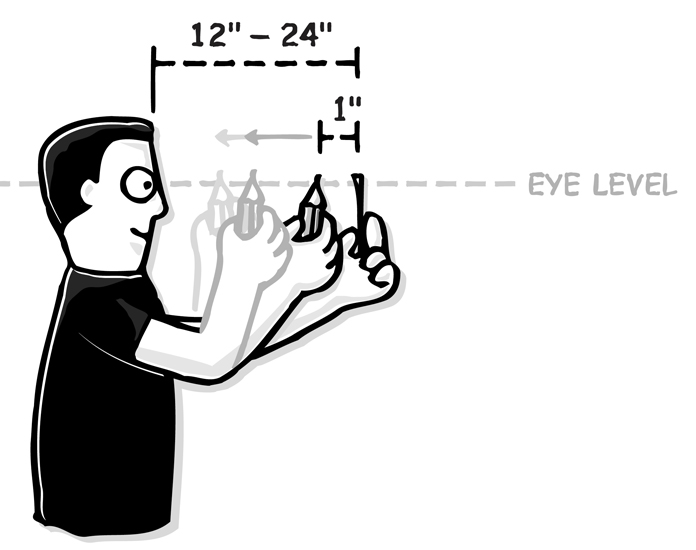
10 Tips to Preserve Kids’ Vision in a High-Tech World
The holidays are always a time of new toys for kids. In today’s world, those holiday gifts often mean new screens. There is tons of research out there about how and why we should limit kids’ screen time, from attention concerns to social and emotional health. But, how do screens impact kids’ vision? And what can we do to mitigate the impacts of technology on our children’s eyes?
Leisure time isn’t the only time kids are spending arguably too much time in front of a screen. Today’s teachers make full use of technology in the classroom, too – including computers and digital devices – to enhance learning. Nearly 90 percent of teachers use some form of technology in the classroom, according to EducationWeek. Sixty percent use video streaming services, 25 percent use digital creation tools, and 13 percent use social media as a teaching tool. Couple that with kids’ game-playing, TV-watching, e-reading, and smart-phoning at home, and you’re talking a lot of time in front of a screen. In fact, recent studies have shown that children ages 8 to 18 spend an average of 5-7 hours per day looking at digital devices!
Of course, with all of this additional screen time comes additional concerns about conditions like digital eye strain or computer vision syndrome. Nearly a third of parents say they’re concerned that computers and handheld electronics may damage their child’s eyesight. And they’re right to be concerned: close work is linked to the faster progression of myopia, and more and more of what we do every day falls into the close work category. So what can we do to combat these pressing issues? How can we help our children protect their vision?
How Can I Protect My Kids’ Vision?
Handheld devices pack a lot of text onto a small screen, so we tend to hold them very close to our eyes to see them. This can strain the eyes and even cause damage long-term. Here are 10 tips to protect your kids’ vision when it comes to devices:
1. Limit Your Children’s Use of Handheld Electronics to Only Quick Tasks

One easy way to help prevent eye strain is to return to more old-fashioned methods. Push your kids to only use technology for quick tasks, such as texting, rather than reading long articles for homework assignments. For longer articles, consider printing out the information and having them read it from the paper. At the very least, make sure they complete tasks like that on a bigger screen rather than on a cell phone.
2. Make Sure Your Kids Aren’t Holding Smartphones or Other Handheld Devices Too Close to Their Faces
The same goes for computer use. Looking at a computer for long periods fatigues the eyes, resulting in eyestrain, headaches, dry eyes, blurred vision, and trouble seeing faraway objects. 16 to 18 inches from the face is a good benchmark to preserve vision.
3. Teach Your Kids to Rest Their Eyes
Taking breaks while working applies just as much to their young, still-developing eyes as it does to yours. Every 10 minutes tell them to look at least 10 feet away for 10 seconds. This is the famous Rebuild Your Vision 10-10-10 rule. Also, remind them to blink regularly to prevent dry, irritated eyes. It’s also important to consider whether you have a workspace conducive to protecting your kids’ vision. Putting your child at an adult-sized desk defeats proper ergonomics. Even teens who are taller than their parents may need their workspaces adjusted.
4. Place the Computer Monitor 20 to 28 Inches Away from Your Kid’s Eyes
Align the top of the screen at eye level so that they look down at the screen as they work. This plays into proper ergonomics as well. Instituting this rule both during homework time and during leisure time is important for protecting your kids’ vision.
5. Choose a Comfortable, Supportive Chair Positioned So That Your Child’s Feet Are Flat on the Floor
The right chair truly makes all the difference. This will discourage them from sitting with their legs tucked under them to get closer to the computer screen. If your child is using a laptop, make sure that they are sitting at a desk or table while using it. Viewing a digital display differs significantly from viewing something on paper, especially in terms of brightness. The glossy surface of a computer monitor or smartphone screen can be highly reflective, and this glare is harmful to vision.
6. Be Sure the Brightness of the Digital Display Is the Same as the Background Brightness of the Room
The contrast of a bright screen and background darkness puts a strain on the eyes. Some computers these days even have settings that will allow the computer to automatically adjust the brightness depending on the time of day. Make sure you know how to switch these settings on and teach your child how and why to adjust these settings, too. Empowering them with the knowledge to protect their own vision is essential to making it a long-term habit.
7. Invest in an Anti-glare Film
You may have heard of blue light-blocking glasses, which can be a great investment, but there are also protective films that you can install directly to your children’s devices these days. They are now available for smartphones and iPads, as well as computers. On that note, paper reflects light, but computers generate their own light. So, lighting a room where your children can do both paper and digital homework can be challenging. Anti-glare films can help mitigate such issues.
8. Use Spotlighting to Keep the Computer Viewing Area Separate from Where Your Child Works on Paper
Simply invest in a good desk lamp to achieve this task. This will help accommodate both viewing situations. Ultimately, of course, the best way to protect your children’s eyes is to help them cut back on their screen time.
9. Suggest That They Limit Leisure Screen Time to Two Hours or Fewer a Day
This includes watching TV, playing video games, and using mobile phones. (Hey, we said it was the best way – we didn’t say it would be easy!) One way to encourage your children to spend less time in front of a screen would be to encourage them to participate in sports at school. This will keep them occupied and socially stimulated, leaving less time and need for screens at home.
10. Encourage Your Child to Spend More Time Outdoors
Spending time outside is always a good idea for your children. It allows their eyes a break from the close work and light exposure that screens require. Additionally, always take notice if your children are squinting, frowning at the screen, rubbing their eyes, or have limited attention for visual tasks. These are all signs of eyestrain. If your child complains of headaches after reading, blurriness, eye fatigue, or double vision, visit your ophthalmologist.
Since many jobs also require the use of computer screens, your eyes may need the break just as much as your children do. Consider going for walks with your children as often as possible. Even just spending some time relaxing at a nearby park can be helpful. Not only will it give all your eyes a break, but it may promote some family bonding, too.
You can also help your children’s eyes by making sure that they are getting the vitamins and nutrients that their eyes need to stay healthy. The best way to do this for children is to encourage them to eat more fruits, vegetables, and salad greens. It’s never too early to start protecting their vision!
Our Rebuild Your Vision Ocu-Plus Formula Contains All 17 Vitamins, Minerals, and Herbal Supplements to Improve Your Eye Health!




These are some great tips to help kids in this crazy technology driven world. A lot of the tips are common sense that every parent should know and then there are some really gems like adjusting the brightness of the screen to match the room. But the very best tip is #10 SIMPLY SPEND MORE TIME OUTSIDE!!!. Thank you for this post and the great information!